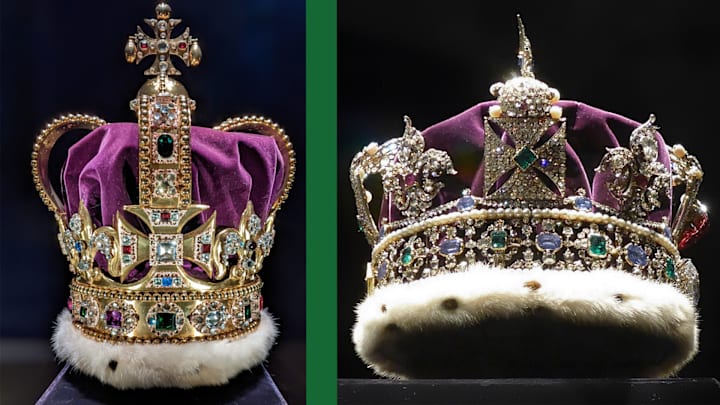During King Charles III’s coronation ceremony this weekend, the new monarch will don two different crowns. First will come the St. Edward’s Crown, which the Archbishop of Canterbury will place upon Charles at the official moment of his coronation in Westminster Abbey. Then, Charles will swap out that headgear for the Imperial State Crown, which he’ll wear as he exits Westminster and leads the “Coronation Procession” back to Buckingham Palace.
So, why two crowns? The shortest answer is “for tradition’s sake”—but the tradition itself and the rationale behind it are slightly more complex.
The original St. Edward’s Crown is believed to date back to the era of St. Edward the Confessor, who ruled England from 1042 until his death in 1066. Henry III, a huge fan of St. Edward in general, was the first king (who we know of) to wear the crown for his coronation (his second coronation, to be exact, which took place in 1220), and subsequent sovereigns continued the custom. But since St. Edward was a saint, his crown was considered a holy relic, and therefore had to stay in Westminster Abbey—so the newly coronated monarch would change into some other circlet for the rest of the proceedings.
The tradition was interrupted in 1649, when Oliver Cromwell’s Parliamentarians overthrew the monarchy and demolished nearly all of its regalia. A new St. Edward’s Crown was created (possibly using vestigial materials from the original) for Charles II’s coronation in 1661. That’s the one still used in modern coronations, though it has undergone some upgrades.
The St. Edward’s Crown isn’t permanently kept in Westminster Abbey these days; it lives with other prized relics in the Tower of London. So King Charles III won’t be changing headgear just because the St. Edward’s Crown can’t leave Westminster. Sure, it’s a centuries-old, bejeweled piece of history that probably shouldn’t be paraded through London on someone’s head, anyway. But there’s another reason this crown only gets worn for a moment: It weighs almost 5 pounds.
Queen Anne opted not to wear the unwieldy crown during her coronation in 1702, and it wasn’t worn during a coronation again until George V resurrected the tradition in 1911. He closed out the ceremony in what’s known as the Imperial State Crown, whose most recent iteration was created for George VI’s coronation in 1937. Queen Elizabeth II wore both crowns during her 1953 coronation, too.
The Imperial State Crown tips the scales at a little over 2 pounds, and you can expect to see King Charles III flaunt it during other special events, including the yearly State Opening of Parliament.
